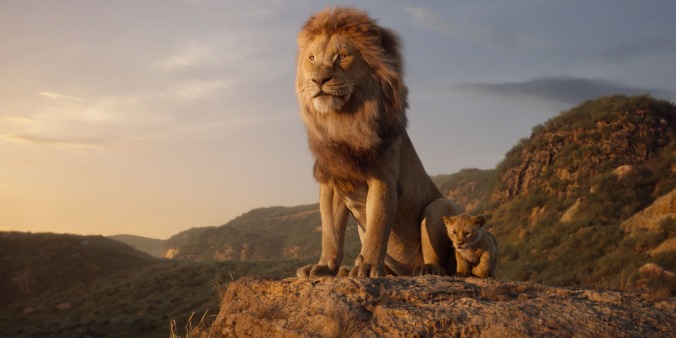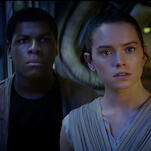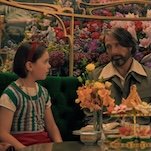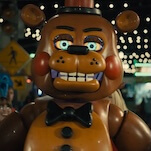The dead-eyed new Lion King painfully illustrates the difference between cinema and video games


For a generation of children, the sight of lion prince Simba watching his father, Mufasa, die in a wildebeest stampede in 1994’s The Lion King represented a first encounter with mortality. Disney’s animators render the moment with a terrible poignancy that can stay with a person for the rest of their life. Mufasa first falls down toward the “camera,” a reverse shot from above accompanies his final roar, and then we rapidly zoom out from the pupil of Simba’s eye to reveal his horrified face. His mouth hangs agape, his eyebrows pull back in shock, and his yellow-orange eyes widen to make him look like the frightened little boy he is.
The Mouse House’s new Lion King remake employs photorealistic computer animation to replicate this moment almost exactly. Except that when we get that glimpse of Simba’s reaction, there’s no helplessness, no lost innocence, no fear. There is just the face of a lion, making the only face lions make, albeit with his jaw lowered. One thinks of the words of Werner Herzog, who described looking into the eyes of a chicken and seeing nothing but “a real stupidity, a kind of bottomless stupidity, a fiendish stupidity.” Having said all that, you’ve got to hand it to Disney: It sure does look like a real lion.
While a vocal critical component has emerged branding Disney’s latest a failure (“Joyless, artless, and maybe soulless,” raves The A.V. Club’s own A.A. Dowd!), it would be just as accurate to say that the studio has succeeded in a disastrously ill-conceived mission. From the earliest conceptual stages, the project prioritized above all else the herculean work of creating and populating the film’s high-def vision of the African savannah. The production team operated under the premise that technological ingenuity can be tantamount to artistry, the notion that the most sophisticated product must be the superior one. To best understand the mindset responsible for this error, curious parties need only turn to the world of video games, where an emphasis on graphics can help games to transcend wobbly writing and sell blockbuster numbers. But the qualities unique to the two media—their limits, how we interface with them—make photorealism a thrilling fount of possibility for the button-mashers, and kryptonite for the movies.








































